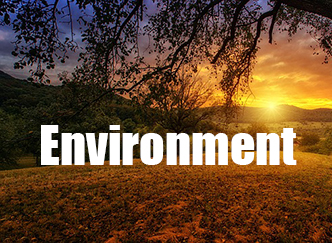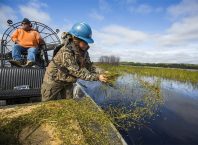By Winona LaDuke
Most Minnesotans don’t realize that the largest inland oil spill in U.S. history was here. On March 3, 1991, the Line 3 pipeline ruptured near Grand Rapids, spilling over 1.7 million gallons of oil into the Prairie River, after a delayed response by Lakehead Pipeline, Enbridge’s predecessor. The Prairie flows to the Mississippi. In 1991,there was 18 inches of ice on the river, or millions downstream would have had poisoned water. Thankfully, our territories were still frozen and snow-covered in March, before climate change had fully sunk its teeth in.
As a result, the cleanup was relatively quick and effective, so the spill received nowhere near as much media attention as Enbridge’s catastrophic Kalamazoo River spill of 2010. That spill took Enbridge 17 hours to close down. Enbridge has spent more than $1.2 billion dollars (and still counting) cleaning up the Kalamazoo mess, and they haven’t finished yet. It turns out that 1.1 million gallons of tar sands oil is not easily removed from riverbanks and sensitive wetlands. Minnesota, take heed.
Line 3 is now 56 years old, well past its intended lifespan. Enbridge’s Mainline Corridor has six pipelines in it – the old Lakehead lines 1, 2, 3, and 4, plus the new Alberta Clipper and its diluent companion, Line 13. Many governmental reports refer to Lines 3 and 4 as a single unit, because of the complicated ways they work in tandem. Together they are responsible for not only the 1991 Grand Rapids spill, but also the catastrophic 2002 spill near Cohasset, MN; the 2007 explosion in Clearbrook, MN, that killed two workers; a serious spill in Regina, Alberta in December 2014; and countless other ruptures and spills. Enbridge reports that since 1990, Line 3 has had at least fifteen large spills (more than fifty barrels each), but the number of small spills and leaks is anybody’s guess. Line 3 is crumbling. According to Enbridge’s own data, it has ten times as many corrosion anomalies per mile than any other pipeline in their Mainline System. They estimate over half a million structural anomalies in Line 3, or about 1 every 10 feet. Enbridge Integrity Supervisor Laura Kennett has testified, “I consider Line 3 to be in the deterioration stage …as external corrosion growth is increasing in an exponential fashion.”
The company has reduced the pressure to the bare minimum, and spends billions of dollars digging up and fixing pieces of it (they anticipate needing at least 12,000 integrity digs in the next decade).
Line 3 is a ticking time bomb. They cite this as justification for building a new one. It should be shut it down and cleaned up. But Enbridge plans to abandon the pipeline in the ground, along with inevitable contamination, then walk away and build an entirely new Line 3 pipeline in a new corridor. The State of Minnesota, including the Public Utilities Commission (PUC), has the responsibility to regulate pipeline abandonment, but there is currently no plan. Because Line 3 is the first crude oil pipeline to be abandoned in our state, there is a risk that the PUC will avoid their responsibility.
The proposed “Line 3 Replacement” sets a dangerous precedent. It is not a replacement. It’s a new pipeline with larger diameter pipe. The new Line 3 could eventually carry over a million barrels daily of the dirtiest oil in the world. It is time for Enbridge to clean up its old mess. Hire union workers, and protect us all. And it’s time for us all to move on. Enbridge has a $5 billion plus renewable energy portfolio. That’s what Minnesota deserves – the next and best technology, not 50 more years of risk to our water and future.







